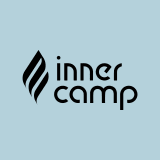This informal CPD article, 'Alternative and Holistic Appoaches to Trauma', was provided by InnerCamp, who work within the holistic health sector offering expert-led solutions to help you rediscover your inner force and stand strong in your foundation on both personal and professional levels.
Trauma is defined as a very stressful or disturbing experience. Many people associate trauma with violence, abuse, or a catastrophic event; nevertheless, trauma can manifest itself in a variety of less obvious ways. The death of a loved one and abnormally high levels of stress can be painful. A split, divorce, or infidelity can all be terrible losses.
Trauma can be defined as any experience that dramatically alters your response to the outside world, whether it damages your faith in people, leads you to feel numb to normal feelings, or causes you to feel despair or fury toward forces beyond your control.
How does a holistic approach to trauma work?
Holistic treatment focuses on the individual as a complex being. Holism holds a philosophy that views nature as a complex network of smaller components working together and creating the world we live in as a result. Each individual is also thought of as a complex being with several elements that come together to form a unique individual.
When someone adapts a holistic philosophy of treating others, they acknowledge that everyone has a mind, body, and spirit. These three components are closely linked with each other. When one is in a disturbed state, the other two components are automatically affected. Through the years, many practices and therapies have been developed to treat trauma in humans. Here are five of the most popular approaches now used:
Art Therapy
Drawing, painting, collage, colouring, and sculpting are more than just artistic techniques; they are also vehicles for self-expression and comprehension. A certified and credentialed art therapist can help an individual discover messages and symbolism in various art forms, going deeper into a person's innermost thoughts by investigating the psychological significance behind their creations. This mode of expression is an implemented treatment strategy for underlying problems, and it can assist clients in discovering various elements of their own personalities.
Art therapists are taught to comprehend how colour, texture, and diverse media can aid in the therapeutic process by disclosing a person's ideas, feelings, and overall disposition, according to the American Art Therapy Association. A typical art therapy session will include drawing, painting, sculpture and collage — or a combination of these media.
The purpose of an art therapist is to engage a person's mind and body in ways that go beyond verbal articulation alone. A person can explore kinesthetic, sensory, perceptual, and symbolic chances to express themselves by creating, giving voice to an experience and empowering an individual to modify their perception of whatever issues they're facing. In practice, art therapy can be used in conjunction with or as a substitute for talk therapy.
Reiki
Reiki is a Japanese form of energy healing. Dr. Mikao Usui developed the dominant style of reiki practiced today, also known as Usui reiki, in the early twentieth century. Reiki does not cure diseases or sicknesses directly. Instead, it is used to treat symptoms and promote overall well-being. During a Reiki session, the practitioner rests their hands directly on you or slightly above you to promote healing. The practitioner is thought to be able to stimulate your body's innate healing abilities.
Reiki is considered to be non-invasive and safe. It has no known negative side effects. For individuals who have suffered trauma in the past, resting quietly in a dim room with someone close to you may be unpleasant. Reiki sessions may be utilized as a part of a depression therapy regimen. Researchers examined the effects of reiki on elderly people suffering from pain, despair, or anxiety in a 2010 study. Physical symptoms, mood, and overall well-being improved for the individuals. They also reported greater sensations of calmness, more curiosity, and improved self-care (Richeson et al., 2010).
Acupuncture
Acupuncture is an alternative technique in which thin needles are placed into the skin along what are assumed to be energy lines. The treatment is based on ancient Chinese practice and is still commonly utilized today, notably in many NHS general practices as well as the majority of pain clinics and hospices across the UK.
Acupuncture stimulates sensory nerves beneath the skin and within muscles, causing the body to create natural compounds such as pain-relieving endorphins. As a result, acupuncture is frequently used to treat migraines and chronic tension-type headaches, anxiety, joint pain, dental pain, chronic pain, infertility, and post-operative pain. Acupuncture has been shown in multiple trials to reduce stress, anxiety, and physical symptoms associated with traumatic situations.















